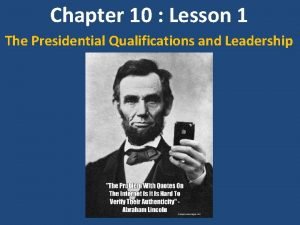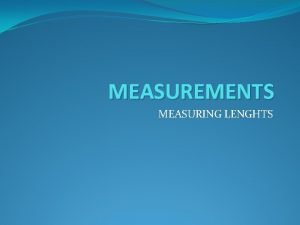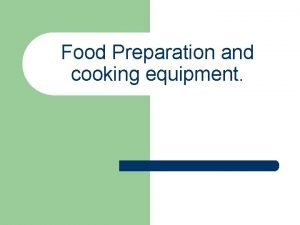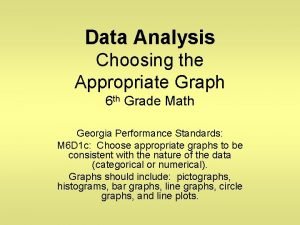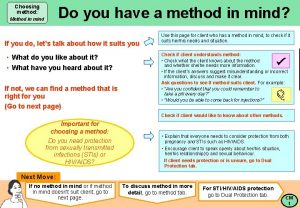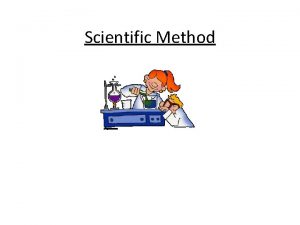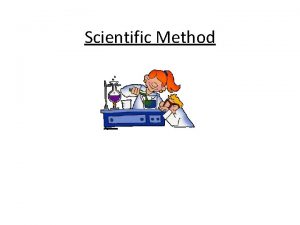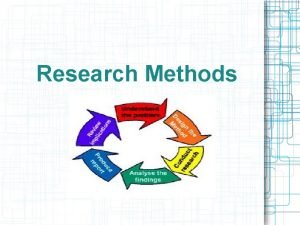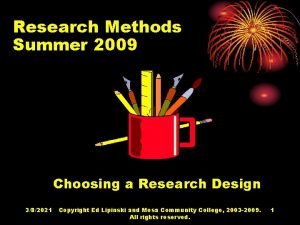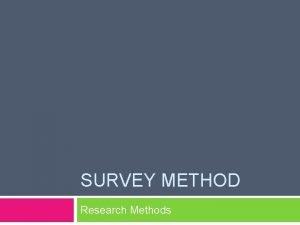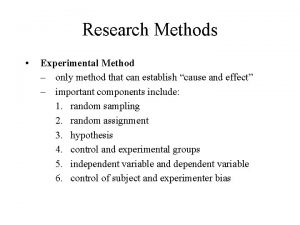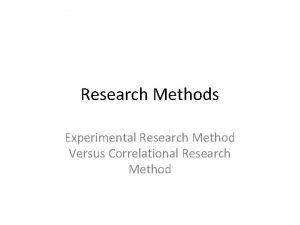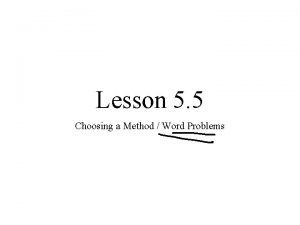Research Methods Lesson 1 choosing a research method




















- Slides: 20

Research Methods Lesson 1 choosing a research method types of data Objectives: • To know the main types of data are and what research methods sociologists use • Understand the practical, ethical, and theoretical factors influencing choice of method and topic, and assess their importance

Starter Look at the photograph, As a sociologist, you want to study a particular group in school. In pairs think about the following questions… 1. Which group might you want to study? Why? 2. What ways could you use to find out information about the group? 3. What prior knowledge or training might you need to carry out the research?

Why do we need to do research? • Sociologists create theories to explain social phenomena but these need to be You need to by be evidence… able to comment on whether supported research is ‘good evidence’ or not; in order – Other sociologists may challenge the credibility to do this you need to understand the of theory and the sociologist. methods and issues involved. – Theories may inform government policy so they need to be correct! – It is the acquisition of empirical evidence that separates sociology from common sense.

Types/sources of data Quantitative data Qualitative data Numerical data e. g • official statistics on how many girls achieved A*-C • % of marriages ending in divorce Non-numerical data Gives a ‘feel’ for what something is like. More in-depth e. g • What does it feel like to underachieve • How does it feel to get divorced Often collected via in depth interviews or participant observations Primary sources of data Secondary sources of data Information collected by the sociologist for their own purposes to test their hypothesis (an untested theory) e. g • Questionnaires • Experiments • Participant observations Information collected by someone else for their purpose, which the sociologist may then use. E. g • Official statistics produced by the government (i. e unemployment figures) • Documents such as newspapers, diaries, TV broadcasts

Primary Data Primary data: collected by sociologists themselves for their own purposes. To get a ‘picture’ of a group in society or to test a hypothesis. Social surveys: asking people questions in a written questionnaire or an interview Participant observation: the sociologist joins in with the activities of the group he/she is studying Experiments: sociologists rarely use lab experiments, but may use field experiments and the comparative method.

Primary Data Sociolog ists can gather precisel y the in formati need to on they test the ir hypot heses. Can be c ostly an d time consumi ng

Secondary Data • Information that has been collected or created by someone else for their own purposes, but which the sociologist can then use. Official statistics: produced by government on a wide range of issues such as education, crime, divorce and unemployment. As well as other stats produced by charities, businesses ect. Documents: such as letters, emails, diaries, photographs, official reports, newspapers, internet and television broadcasts.

Secondary Data Using se co quick an ndary data can d cheap be a w researc h, some ay of doing one has produce already d the in formati on. Those w ho have pr data ma y not be oduced the interest the sam ed in e q u estions sociolog as ists, so the sec sources ondary m a y not prov exactly ide the info sociolog rmation that ists nee d.

Qualitative vs. quantitative data • Sociologists use 2 types of data in their research. Quantitative: info in numerical form. Qualitative: ‘feel’ for what something is like. Provide rich descriptions of people’s feelings and experiences

TASK • Sort the cards out into strengths and weaknesses of each type of data • We will go through the answers as a class when all groups have completed this

Primary data - strengths • The sociologist can gather the precise information they need. • The data is contemporary and up-todate.

Primary data - limitations • It’s costly and time consuming. – The sociologist may be limited in terms of the amount of data they can collect. • The sociologist may not be able to gain personal access to the people they wish to study. • Sociologists do not have the power to compel people to take part in their research. • It can still be biased

Secondary data - strengths • It’s a quick and cheap way of doing research. • The sociologist can have access to large amounts of data.

Secondary data - limitations • It may not provide the precise information the sociologist is interested in. • The data may have been collected by someone/an organisation with ulterior motives and therefore may be biased.

Quantitative data - strengths • Quick and easy to analyse. • Enables the sociologist to identify trends and patterns over time and between groups. • Generally regarded as more reliable and objective and therefore scientific.

Quantitative data - limitations • It lacks detail – it doesn’t reveal the reasons for the behaviour or the meanings attached to it by those involved. • May lead to overgeneralisations being made which prove to be invalid.

Qualitative data - strengths • Provides rich detailed information. • Allows the sociologist to appreciate the reasons for behaviour and the meanings attached to it by those involved.

Qualitative data - limitations • Time consuming and difficult to analyse. • Often analysis of the data requires interpretation on the part of the sociologist, it therefore may be open to bias and therefore not be valid. • Sociologists may misinterpret what people say; the meaning of words differs between people. • Tends to come from smaller samples limiting the extent to which generalisations can be made.

• No data produced by research is perfect and when considering their limitations, the following concepts need to be considered: • Reliability- data is reliable if another researcher using identical methods would produce the same results. Reliability can be checked when research is replicated. • Validity- this concerns how true the data is, that is, how close the fit is between the data and reality. Data is invalid if does not match reality. • Representativeness- data is representative if the individual’s studies are a typical cross section of the wider population that the researcher is interested in. If it is not, then generalisations about the wider group they represent cannot be made.

Plenary • Draw a table summarising primary, secondary, qualitative and quantitative. • Include one strength and one limitation of each.
 Choosing healthful foods lesson 25
Choosing healthful foods lesson 25 Lesson 1 presidential qualifications and leadership
Lesson 1 presidential qualifications and leadership Chapter 21 lesson 2 choosing to live alcohol free
Chapter 21 lesson 2 choosing to live alcohol free Chapter 20 lesson 2 choosing to live tobacco free
Chapter 20 lesson 2 choosing to live tobacco free Your body uses carbohydrates by breaking them down into *
Your body uses carbohydrates by breaking them down into * Choosing a factoring method
Choosing a factoring method Indirect wax pattern
Indirect wax pattern Disadvantages of symposium
Disadvantages of symposium Methods of science lesson 1
Methods of science lesson 1 Method vs methodology
Method vs methodology Choosing food wisely quiz
Choosing food wisely quiz Choosing abstinence quiz
Choosing abstinence quiz Choose the appropriate metric unit to measure each item
Choose the appropriate metric unit to measure each item Labour saving devices in the kitchen and their uses
Labour saving devices in the kitchen and their uses 3 approaches to measuring performance
3 approaches to measuring performance Choosing an appropriate graph
Choosing an appropriate graph Brand elements with examples
Brand elements with examples Defining performance and choosing a measurement approach
Defining performance and choosing a measurement approach Basic cooking methods
Basic cooking methods Vocabulary choose the correct answer
Vocabulary choose the correct answer Choosing food wisely
Choosing food wisely

